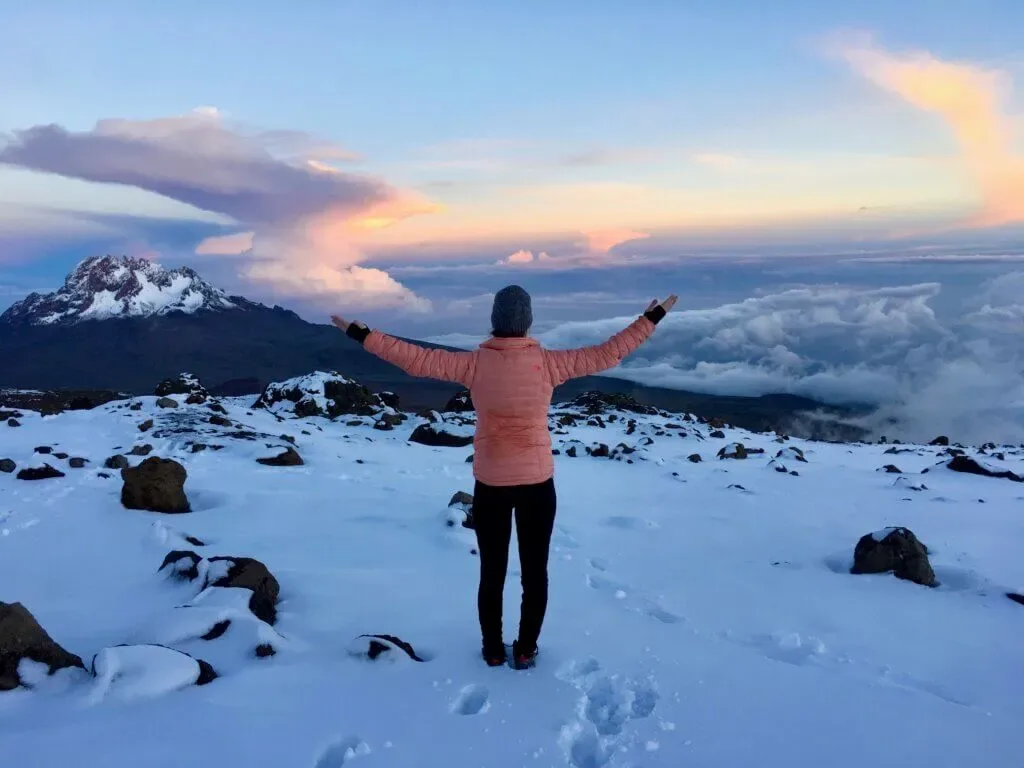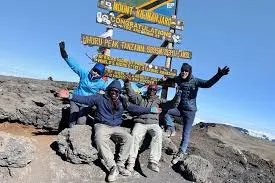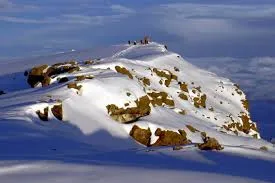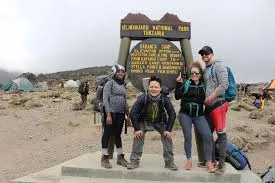One-Day Kilimanjaro Summit: Feasibility & Tips
Summiting Mount Kilimanjaro in one day is an extreme challenge reserved for elite athletes with high-altitude experience. With Capable Africa Tours, learn if this feat is feasible, what preparation it demands, and essential tips to maximize safety and success. From gear to training, we’ve got you covered for this daring adventure.
Plan Your Kilimanjaro Adventure Now
Is a One-Day Kilimanjaro Summit Possible?
Summiting Mount Kilimanjaro, Africa’s highest peak at 5,895 meters (19,341 feet), in just one day is an extraordinary challenge. Technically, it is possible to attempt a one-day Kilimanjaro summit, but it is highly discouraged due to the extreme altitude gain, physical strain, and lack of acclimatization. The mountain’s height and varying climate zones require gradual adjustment for safety and success. Most climbers need 6–9 days to summit safely. Here are the key reasons why a one-day Kilimanjaro climb is not advisable.
Key Factors Affecting Feasibility
- Altitude Challenges: Rapid ascent from 1,800m to 5,895m increases risks of acute mountain sickness (AMS), high-altitude pulmonary edema (HAPE), and cerebral edema (HACE).
- Physical Demands: A one-day climb involves 15–20 hours of continuous trekking, covering 30–40 km with a 4,000m elevation gain.
- Acclimatization: Most climbers need 6–9 days to acclimatize. A one-day attempt requires pre-acclimatization (e.g., prior high-altitude exposure).
- Logistics: Requires expert guides, oxygen support, and precise timing to navigate steep routes like Umbwe or Machame.
Who Can Attempt It?
Only ultra-fit individuals with extensive high-altitude experience, such as marathon runners or mountaineers, can attempt climbing mount Kilimanjaro in just one day. Capable Africa Tours has supported rare one-day summit attempts for athletes with medical clearance and customized planning.
| Aspect | One-Day Summit | Standard 6–9 Day Climb |
|---|---|---|
| Duration | 15–20 hours | 6–9 days |
| Distance Covered | 30–40 km | 60–100 km |
| Elevation Gain | ~4,000m | ~4,000m (gradual) |
| Success Rate | <10% (elite only) | 95% (with Capable Africa Tours) |
| AMS Risk | High (50–70%) | Low (10–20%) |
Preparation Tips for a One-Day Kilimanjaro Summit
A one-day Kilimanjaro summit attempt is extremely challenging and not recommended for most climbers due to the risks of altitude sickness and fatigue. However, if you are considering it, preparation must be thorough to ensure the highest level of safety and performance. Physical conditioning, proper gear, and altitude readiness are essential. Here are key preparation tips for anyone attempting a one-day Kilimanjaro summit with Capable Africa Tours.
Training Regimen
- Cardio Endurance: Train for 6–12 months with marathon-level running (42km) or cycling (100km) sessions 3–4 times weekly.
- Strength Training: Focus on legs and core with squats, lunges, and deadlifts (3–4 sets, 8–12 reps, 3x/week).
- Altitude Simulation: Use altitude training masks or train at elevations above 3,000m if possible.
- Long Hikes: Complete 10–15 hour hikes with 1,000m+ elevation gain to simulate summit day.
Gear Essentials
- Clothing: Lightweight, moisture-wicking base layers (merino wool), insulated mid-layers (fleece), and waterproof/windproof outer layers (Gore-Tex).
- Footwear: High-performance, broken-in hiking boots with ankle support and grippy soles.
- Daypack: 20–30L pack for essentials (water, snacks, layers).
- Hydration: 3–4L hydration bladder with electrolyte tablets.
- Nutrition: High-energy snacks (2,000–3,000 calories, e.g., energy gels, nuts, dried fruit).
- Safety: Headlamp (300+ lumens), first-aid kit, oxygen canister, and satellite communicator.
Acclimatization Strategy
Spend 3–5 days at 3,000–4,000m (e.g., Mount Meru or Ngorongoro Highlands) before attempting the summit. Consult a doctor for altitude medications like Diamox.
Safety Considerations for a One-Day Summit
Attempting a one-day summit on Mount Kilimanjaro is not recommended due to the extreme altitude gain and limited time for acclimatization. Rapid ascents significantly increase the risk of altitude sickness, fatigue, and injury. A safe climb usually requires 6–9 days to allow your body to adjust gradually. If you’re considering a shorter trek, safety must remain the top priority. Here are the key safety considerations for anyone attempting or even thinking about a one-day summit.
- Altitude Sickness: Symptoms (headache, nausea, dizziness) can escalate quickly. Guides monitor oxygen levels and carry emergency oxygen.
- Exhaustion: Continuous trekking for 15–20 hours requires pacing and frequent breaks.
- Hypothermia: Summit temperatures (0°F) demand insulated layers and windproof gear.
- Navigation: Steep routes like Umbwe require experienced guides to avoid disorientation in low visibility.
Climbers report feeling exhilarated but exhausted, with mental resilience being as critical as physical fitness. Capable Africa Tours’ guides provide real-time support to keep you safe.
Visualize Your One-Day Kilimanjaro Challenge
Get inspired for your one-day Kilimanjaro summit with Capable Africa Tours. Watch this video to see the terrain and learn preparation tips.
Ready to Attempt the One-Day Kilimanjaro Summit?
Take on the ultimate challenge with Capable Africa Tours. Our expert guides, tailored planning, and safety protocols ensure you’re prepared for this epic adventure.
- Customized one-day summit plans for elite climbers
- Expert guides with 98% summit success rate
- Emergency oxygen and safety equipment included
- Eco-friendly trekking with local support
- Comprehensive pre-climb consultations
Limited one-day summit slots — contact us now to plan your adventure!
Plan Your Summit Now


